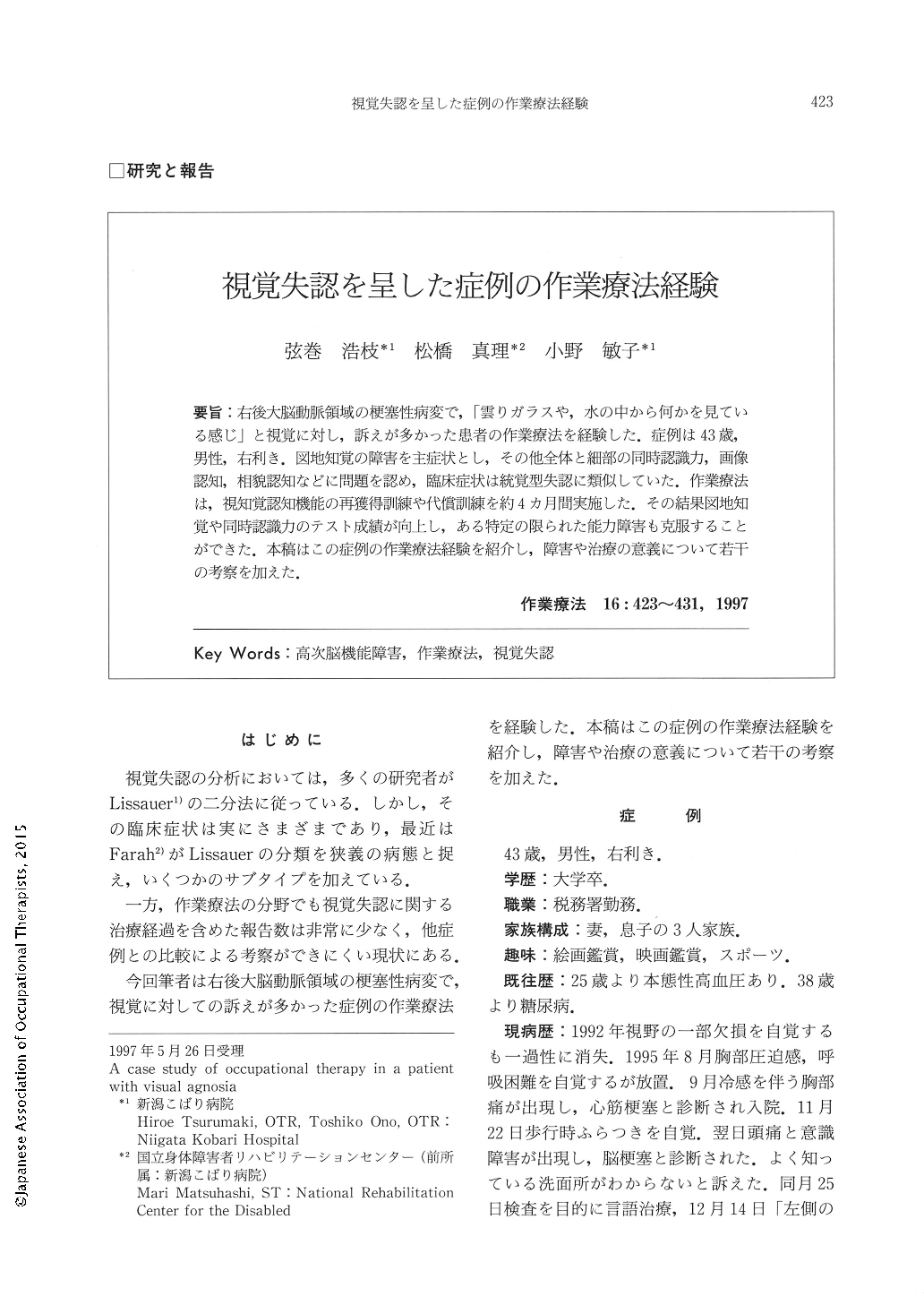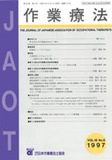Japanese
English
- 販売していません
- Abstract 文献概要
- 1ページ目 Look Inside
- 参考文献 Reference
要旨:右後大脳動脈領域の梗塞性病変で,「雲りガラスや,水の中から何かを見ている感じ」と視覚に対し,訴えが多かった患者の作業療法を経験した.症例は43歳,男性,右利き.図地知覚の障害を主症状とし,その他全体と細部の同時認識力,画像認知,相貌認知などに問題を認め,臨床症状は統覚型失認に類似していた.作業療法は,視知覚認知機能の再獲得訓練や代償訓練を約4カ月間実施した.その結果図地知覚や同時認識力のテスト成績が向上し,ある特定の限られた能力障害も克服することができた.本稿はこの症例の作業療法経験を紹介し,障害や治療の意義について若干の考察を加えた.
A 43 year-old right handed male with cerebral infarction of the right posterior cerebral artery underwent occupational therapy.
He did not show signs of nystagmus, motor paralysis, sensory disturbance or ataxia by neurological examinations but did present with left homonymous hemianopsia. His visual acuity was a normal 1.2 bilaterally.
In neuropsychological examinations, he did not show signs of apraxia, aphasia or color agnosia. The ability to copy pictures and cognition of a single article was almost normal, but he complained of visual impairment in his daily life.
The score of figure-ground perception test (Southern California Sensory Integration Test) was 12/48. He also showed signs of slight left unilateral neglect, simultauagnosia, picture agnosia and defect of memory for the human face. It was suggested that his condition was one of an apperceptive visual agnosia and the contributing factors of his visual impairment were caused by defects of ability to process visual information of complicated or poor quality.
Occupational therapy consisted of retraining visual perception and substitution exercises. The score of the figure-ground perception test improved, and a part of his disability, such as searching for articles and housekeeping, improved on performing substitution exercises, but his simultauagnosia did not improve.

Copyright © 1997, Japanese Association of Occupational Therapists. All rights reserved.


